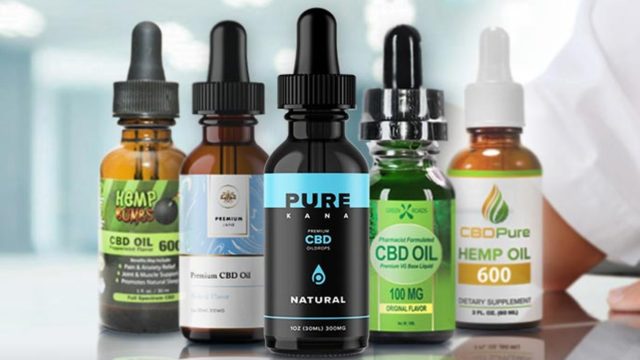
For first time buyers, deciding to invest in a CBD product to help with achieving a better overall quality of life when it comes to both mental and physical health can sometimes be a little overwhelming. There are many different CBD companies out there, each with their different lines of CBD products, and they all have their different pros and cons. To help newer CBD users navigate the booming CBD market, we will take an in-depth look at each of the different factors that are important to keep in mind when it comes to making a CBD product purchase.
Each of these factors is important when determining which CBD product might be best for your needs and will suit your lifestyle in the best possible way. Of course, the overall weighted importance of each of these factors is wholly dependant on exactly what you are looking for in a CBD product. Because of this, we have done our best to break each factor down into easy-to-digest points.
We have provided a quick short-hand mini-guide at the end of the full guide, which can easily and quickly be used as reference material while you’re shopping around for a CBD product that you would like to give a try. We highly recommend that you visit some of the CBD manufactures that we have previously covered, which provide great CBD products for numerous different uses at competitively affordable prices. You can quickly find a CBD product to research based on a variety of different ailments that are commonly improved through regular CBD usage, such as:
- Pain Relief from Inflammation;
- Sleep Aid
- Anxiety and Stress;
- Depression;
- Mood;
- Diabetes;
- Heart Disease, and;
- Cancer
And we also encourage to take a look at our in-depth review of the current 20 best CBD oils that are on the market right now, whether you’re looking for relief from a specific ailment or illness, or you’re just interested in trying to see if CBD can benefit you just for everyday living. We took a look at a huge variety of different CBD oils from the industry leaders in CBD products to determine the best of the best based on a variety of important factors, such as their overall quality, efficacy and their price point in order to provide you with our personal 20 top picks.
After reading this comprehensive guide to buying CBD products, hopefully we will have done a sufficient job in providing you with all of the tools, knowledge and resources that you will need to be able to buy CBD products with confidence, even though we always do our best to ensure that any of the products we recommend will be a worthwhile purchase for our health-conscience readers.
Concentration Versus Dosage
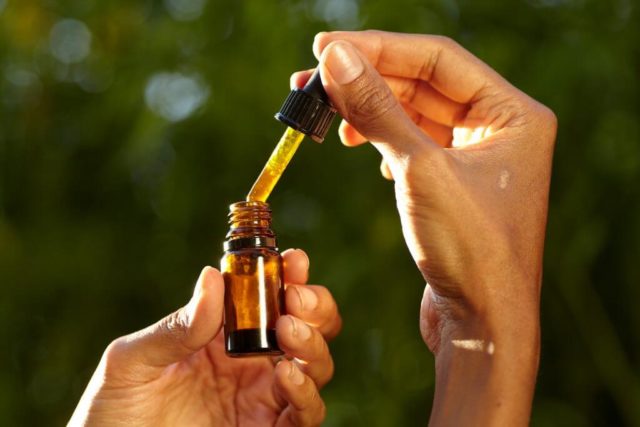
The CBD concentration of a product is sometimes mistaken by new buyers for the dosage of a CBD product, but they are completely different things. The concentration of CBD in a given product is the overall strength of the CBD, which is to say it refers to the overall amount of CBD by product weight. CBD is measured in milligrams (mg), so the concentration of CBD in a product will always be quantified in mg, even when the product itself uses a different measuring unit, such as milliliters (mL) or fluid ounces (fl. oz. or oz. fl.). The dosage of a CBD product is the recommended amount that should be taken at a given time within a certain time frame, often a 24-hour period.
So, for example, say you’re looking to buy a CBD oral tincture product from a reputable online CBD retailer, and this particular CBD oral tincture contains a total of 30 milliliters (mL) of liquid and it has a concentration of 500 mg with a manufacturer’s recommended dosage of 1 mL every six hours, we would have all of the information needed up front to determine exactly how much CBD you will be introducing into your system at a given time, even before you buy a new CBD product: it’s concentration and dosage.
The concentration of this product — as we’ve determined in this example — is 500 mg; this means that in the entire bottle (30 mL of liquid for this example product), there is a grand total of 500 mg of CBD. For this exercise, we will say that this particular product has a manufacturer’s recommended dosage of 1 mL per every six hours, so we can determine that each recommended serving of 1 mL of oral tincture will contain approximately 16.6 mg of CBD out of the total of 500 mg (500 mg concentration in total ÷ 30 mL of total product size ÷ 1 mL serving size means that there is 16.6 mg of CBD per serving.)
All reputable CBD retailers and manufacturers will provide you with the concentration, total product weight, and their recommended dosage guidelines, as is required by Federal law. By knowing the difference between concentration and dosage, with the manufacturer’s provided information, you will be able to quickly and easily determine how much CBD you will be taking per recommended dosage, even if you’re not provided with this exact information upfront.
Determining the concentration of a given product is generally very easy, as most products will have the concentration listed directly on the product, but determining your dosage is a little more complicated. Often, manufacturers will give you a recommended dosage to follow, but these dosage suggestions are sometimes given in a range, or the dosage for a product might be higher or lower for you specifically, due to a few different factors. These factors are:
- Your Body Weight: your body weight can play a role in determining what dosage would be best for you. As with any supplements, medications, or other foreign substances you introduce into your body (such as food, alcohol, etc.), your overall body weight has some deterministic factors in how quickly you will absorb and start to break down the product;
- Your Desired Effects: what your exact desired effects from the CBD product will also play a role in determining what your dosage amount should be. This is due to the fact that if you just want to have a better overall mood, you will theoretically probably need to take less mg of CBD per dose as opposed to someone that is using a CBD product as a supplementary health product to mitigate mild-to-severe pain management;
- Your Overall Tolerance Levels: everybody’s body is unique, and they will have varying levels of tolerance to CBD. The tolerance threshold for CBD might increase after prolonged chronic use of CBD, but it’s not a guaranteed occurrence. Similarly, it’s not guaranteed that you won’t have a higher tolerance threshold to the effects of CBD even as a new user.
Because of the different factors that go into finding a dose of a particular CBD product, we recommend that you always start at a slightly lower dose than the manufacturer’s recommended dose any time that you are trying a new CBD product (even if you’re a regular user of CBD products, any time you start using a new CBD product, it could affect you slightly different than previously used CBD products for a variety of different reasons that we will cover later in this guide), and slowly increase the dose amount over time until you find a dose that provides you with your desired effects. Taking higher-than-needed doses is not recommended, as it’s providing you with diminishing returns for a higher cost and it could potentially cause your tolerance levels of CBD to increase, mitigating at lower dosing levels the positive benefits that CBD can provide you.
For helping to determine what dosage size might be the best for you to start out at, we recommend using the Centers for Disease Control and Prevention’s (CDC) Adult Body Mass Index (BMI) calculator and comparing your current BMI against what the CDC considers is the average healthy adult BMI in the United States (which is in a range from BMIs of 18.5 to BMIs of 24.9) and basing any recommended manufacturer’s dosing instructions from the mindset that they are meant for adults that fall somewhere in this range of “Normal” BMIs, and adjusting your starting dosage with that in mind; so taking a significantly lower dose if you fall in the “Underweight” BMI range or taking a slightly lower dose if you fall into the “Overweight” or “Obese” BMI categories.
As a quick key to cross-reference with your particular CBD product’s recommended dosage, the following information can be helpful for those that are already fairly familiar with how well their body handles various CBD products:
Weight Group – 130 pounds or less:
- For Mild Effects: it is generally recommended to use a dosage with a CBD concentration of no more than 11 mg per dosing period;
- For Moderate Effects: it is generally recommended to use a dosage with a CBD concentration of 12 mg to 14 mg per dosing period;
- For Strong Effects: it is generally recommended to use a dosage with a CBD concentration of 15 mg to 17 mg per dosing period.
Weight Group – 130 to 230 pounds:
- For Mild Effects: it is generally recommended to use a dosage with a CBD concentration of no more than 18 mg per dosing period;
- For Moderate Effects: it is generally recommended to use a dosage with a CBD concentration of 19 mg to 23 mg per dosing period;
- For Strong Effects: it is generally recommended to use a dosage with a CBD concentration of 24 mg to 27 mg per dosing period.
Weight Group – more than 230 pounds:
- For Mild Effects: it is generally recommended to use a dosage with a CBD concentration of no more than 23 mg per dosing period;
- For Moderate Effects: it is generally recommended to use a dosage with a CBD concentration of 24 mg to 30 mg per dosing period;
- For Strong Effects: it is generally recommended to use a dosage with a CBD concentration of 31 mg to 45 mg per dosing period.
Extraction Methods for CBD
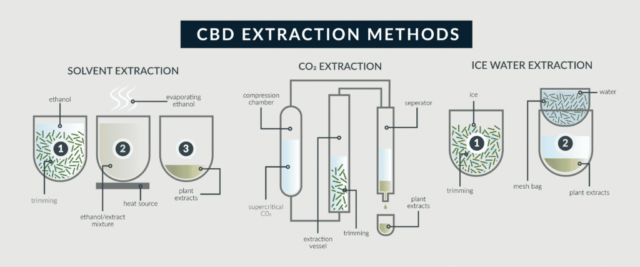
CBD can be extracted from its source in a variety of different methods, each with their own specific pros and cons; some of which will overlap with over-extraction methods. Determining what extraction method you would prefer your CBD product to have used in its manufacturing process depends on a couple of different factors, such as whether you desire the product to have a lower starting price point per milligram of CBD or the overall potency of the CBD product, as some examples.
Following are the common extraction methods that are currently used in the manufacturing process of CBD products, and after the short descriptions that we will provide for each, we will cover the various pros and cons when it comes to how CBD is extracted from its source material.
- Ethanol Extraction: also known as “Alcohol Extraction,” this extraction process is the oldest known extraction process for separating the CBD oils from its natural sources. CBD can be removed from the industrial hemp plant or the cannabis plant by soaking the flower in either ethanol or high proof alcohol;
- CO2 Extraction: uses liquid CO2 and is a clean and efficient way to remove CBD from the industrial hemp flower or the cannabis flower. Because of its overall efficacy and the purity of the end product, it is quickly becoming an industry standard. There are three types of this process, which are known as supercritical, subcritical and mid-critical;
- Water Extraction: a few manufacturers use water, water vapor, or ice in a complicated extraction process to remove the CBD from its source. This extraction process is by-and-far the least common extraction method used in the manufacturing of CBD products;
- Carrier Oil Extraction: for this extraction method, an oil — most commonly olive (but sometimes also coconut oil, hemp seed oil, or some other organic oil) depending on the manufacturer’s preference — is used in this method as a “carrier oil” to envelope the CBD. First, the plant material is decarboxylated. Next, the plant material is added to the carrier oil and heated again for several hours. This draws the cannabinoids out of the plant and into the carrier oil, allowing for further manufacturing;
- “The Rick Simpson Method” Extraction: this extraction method was named after the man who first started using this particular process for the extraction of CBD oils from their source. This is the absolute cheapest and most straightforward method of extraction for the manufacturer; however, this is also highly regarded as being the worst possible means of isolating CBD. A hydrocarbon (such as butane, pentane, propane, hexane, or acetone) is used in this process, and the industrial hemp or cannabis plant material is fully submerged in the solvent. As the plant material is steeped for a period of time in this toxic tea, the compounds are harshly stripped from the plant material and are left in a liquid form which can be used in the manufacturing of the end product.
Overall, CO2 extraction is generally regarded as the best-of-the-best when it comes to CBD extraction, as it is the cleanest extraction method that is generally regarded as being the extraction process that keeps the most Phytocannabinoids intact at higher concentrations, which many regard as being the best way to achieve what is known as the “Entourage Effect”, which is defined in the Glossary section.
This is, of course, not to say that water extraction methods or ethanol extraction methods are not worth your time. While water extraction methods are still a little unclear when it comes to the benefits versus drawbacks that they might have in comparison to the two more common extraction methods, the benefits of ethanol extraction are very well known and documented. Ethanol extracted CBD is still a highly efficacious health, beauty, and dietary supplement product because it is only losing out on a little of the overall amount of the various naturally occurring Phytocannabinoids and terpenes (which are defined in the Glossary section), and does not affect their quality. Ethanol extracted CBD products main appeal is the fact that it generally has a lower price point per mg of CBD, without sacrificing much of the efficacy and without sacrificing any of the purity or safety of the end product.
The two extraction methods used in the manufacturing process of CBD products that we would recommend to our readers the least is the carrier oil extraction method and “The Rick Simpson Method” for extracting CBD. The former extraction method produces CBD that is nowhere near as potent or efficacious in comparison to CBD products that were manufactured utilizing a different extraction method. Finally, the latter of the two, “The Rick Simpson Method” is generally regarded as being the absolute worst extraction method available today. This is not to discredit Rick Simpson’s contributions to the CBD market, but products that contain CBD that was extracted using this method is not only very weak in its potency, but it can also contain trace amounts (or even more than trace amounts in some cases) of harmful contaminants and residues.
So, in short, we highly recommend that you keep in mind that CO2 Extraction and Ethanol (Alcohol) Extraction methods are widely regarded as being the best possible extraction methods on the market today, due to their proven efficacy, potency, and overall purity. As such, we recommend that our readers buy CBD products that contain CBD that was extracted from the plant using one of these two extraction methods.
CBD Isolate, Full-Spectrum CBD, or Broad Spectrum CBD?
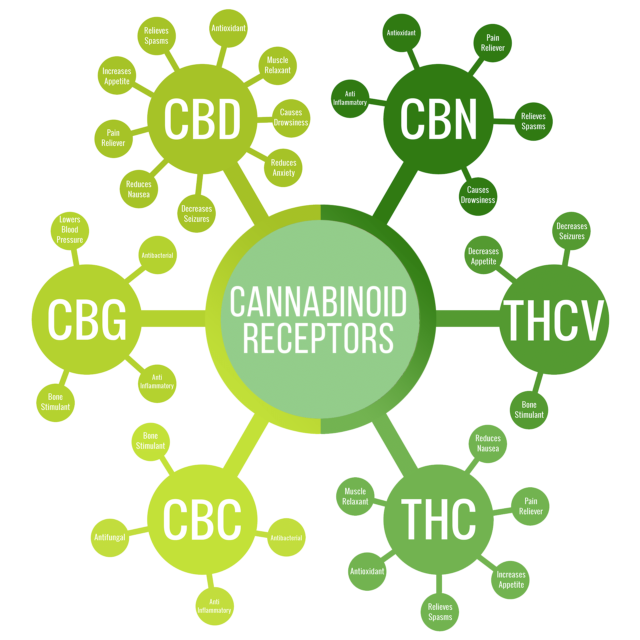
In the simplest terms, CBD Isolate, Broad-Spectrum CBD, and Full-Spectrum CBD are used to give customers a more defined and uniform idea on what type of CBD is used in a specific product. Each type is clearly distinct from the other types, and understanding the difference is essential for every new CBD user due to how each of these types of CBD is utilized by the Endocannabinoid System. The Cannabinoid Spectrum Range contained within a product is what determines whether the product is full-spectrum, broad-spectrum, or CBD isolate. CBD can be extracted in specific manners in order to produce one of three different classifications on the Cannabinoid Spectrum Range. These three distinctions on the Cannabinoid Spectrum Range are:
- CBD Isolate: Scientifically speaking, an isolate is the purest form of a given compound, which is produced by extracting that compound — and only that compound — from its environment, thus isolating it from all other compounds. Because of this, CBD isolate is the purest form of CBD on the Cannabinoid Spectrum Range. CBD Isolate is manufactured in such a way that all other compounds that are normally found in the plant naturally (including terpenes, flavonoids, plant parts, and other cannabinoids) are completely absent from the end product. CBD Isolate is typically only extracted from industrial hemp, due to its already incredibly low THC content (no more than 0.03% THC by weight) without needing to undergo any additional refining steps to get the THC content under the Federally required 0.03% THC content by total weight.
- Full-Spectrum CBD: Full-Spectrum CBD is an extract that contains all compounds that are found naturally occurring in the plant’s aerial parts and subterranean parts. These compounds include terpenes, essential oils, and other vital cannabinoids. These compounds work together in order to magnify the therapeutic benefits of each individual cannabinoid, which greatly increases the therapeutic benefits that are provided overall. This effect is commonly referred to as the “Entourage Effect “by CBD users, CBD advocates, manufacturers, and researchers. It was a previously held belief that CBD in its Isolated from was more effective than Full-Spectrum CBD because it has a higher concentration of Cannabidiol (CBD). However, in 2005, the Lautenberg Center for General Tumor Immunology in Jerusalem released the findings of a study that ultimately provided evidence that the test subjects in this experiment that were administered with Full-Spectrum CBD rated their levels of relief from pain much higher compared to the level of relief that was reported by the subjects that were administered with CBD Isolate. Additionally, the results showed that Full-Spectrum CBD provided enhanced effects at higher dosages, while the effects of CBD Isolate showed less of an increase in their effects at the same increased dosing levels, which is another thing to keep in mind when shopping for CBD products.
Broad Spectrum CBD: Despite its potentially slightly misleading name, Broad Spectrum CBD is essentially a mix between Full-Spectrum CBD and CBD Isolate. Like Full-Spectrum CBD, the other compounds that are naturally found within the plant parts that are used in the extraction process are preserved at greater levels in the end product extract. However, like CBD Isolate, the levels of THC that are present are basically non-existent, as there are no readily detectable traces of the compound. Because Broad Spectrum CBD contains multiple of the most beneficial cannabinoids, it can deliver the enhanced benefits that are provided by the Entourage Effect, without the users of the product running the risk of suffering from the mind-altering psychoactive effects that are associated with THC use.Choosing a CBD product that falls into the section of the Cannabinoid Spectrum Range that you feel will be the most beneficial for you specifically is one of the most important things that you can do as a new CBD user, as CBD products are not one-size-fits-all and each CBD product is extracted and manufactured in a specific manner in order to provide specific benefits and in order to behave in a certain manner on your Endocannabinoid System.
As an additional thing to keep in mind when it comes to figuring out which form that will be most beneficial for you, is this: how your body utilizes and breaks down the CBD product is wholly dependant on the variety of factors that we have already covered in the Concentration Versus Dosage section (which were: your weight, your body’s tolerance to the effects of CBD, and what your desired effects and outcomes are for using CBD). The effects that you desire from your CBD product, however, is probably the most important factor out of the three when considering which form of distilled CBD might be the best choice for you.
If you want a very strong effect from your CBD products, buying a product containing a Full-Spectrum CBD or a Broad Spectrum CBD is probably your best bet. However, if you want a more “clean” effect from your CBD product — such as what you might desire for regular everyday use for general well-being, as opposed to wanting to take a CBD product as a supplement to better handle a chronic or serious illness — then you might want to try a CBD Isolate instead. The decrease in its overall efficacy at higher levels, particularly in comparison to Full-Spectrum CBD products is less of a worry, as you will likely be taking a lower dose for this desired effect anyways.
Distillation
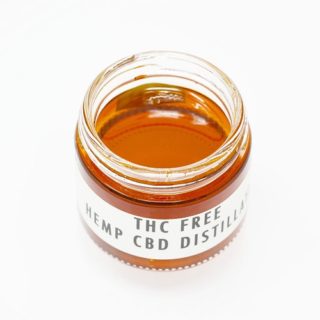
The distillation process that CBD undergoes in order to obtain CBD isolate is often up to a manufacturer’s preferences, and there is not a lot of evidence that one distillation process is necessarily better than other commonly used distillation processes. Due to this, not many manufacturers even disclose what distillation process(es) that they use in the creation of their CBD isolate and their manufacturing of CBD products that use CBD isolate, but we will still quickly cover some of the most commonly used CBD distillation processes in order to provide you with a more comprehensive understanding of what goes into the manufacturing of CBD products:
- Winterization: this is the process to remove undesirable elements that were extracted from the plant; some examples include: fats, natural waxes, and lipids. This process is only needed when the oil was extracted at high pressure and at a high temperature (which is known as supercritical extraction) because this intense extraction pulls everything from the plant, including — most importantly — material(s) that you don’t want in the final product. Once extracted, the mixture is combined with 200% proof alcohol and is then stirred vigorously until it is completely mixed. It’s then placed in a deep freezer for a period of at least 24 hours. After this freezing period, the mixture will have a cloudy look to it, and it is ready for the filtration process;
- Short Path Distillation: This technique is often used for compounds which are unstable at high temperatures or in order to purify small amounts of the desired compound. The advantage of this distillation process is that the heating temperature of the product can be considerably lower (at reduced pressure) than the boiling point of the liquid or oil at standard pressure, and the distillate only has to travel a very short distance before condensing;
- Fractional Distillation is the separation of a mixture into its different component parts, which are known as fractions. Chemical compounds are separated by heating them to a temperature at which one — or more fraction — of the mixture will vaporize. It uses distillation to fractionate, which is a separation process in which a certain quantity of a mixture (either gas, solid, liquid, enzymes, suspension, or an isotope mixture; in this case of CBD isolates it is the solid plant parts) is divided, into a group of smaller overall quantities;
- Continuous Wipe Film Distillation: is an ongoing separation in which a mixture is continuously fed into the process without any interruptions and separated fractions are removed continuously as outputs, removing them from the desired end product;
- Batch Distillation: use of distillation in groups or batches, meaning that a mixture is distilled to separate it into its component fractions before the distillation still is again charged with more mixture and the process is repeated. This is in direct contrast to continuous distillation described above;
- Vacuum Distillation: is a method of distillation performed under reduced pressure, which lowers the boiling point of most liquids. This technique is most commonly used when the boiling point of the desired compound (the CBD isolate) is difficult to achieve or will cause the compound to decompose or degrade, or even simply to save energy in heating.
Industrial Hemp Source Versus Cannabis Source CBD
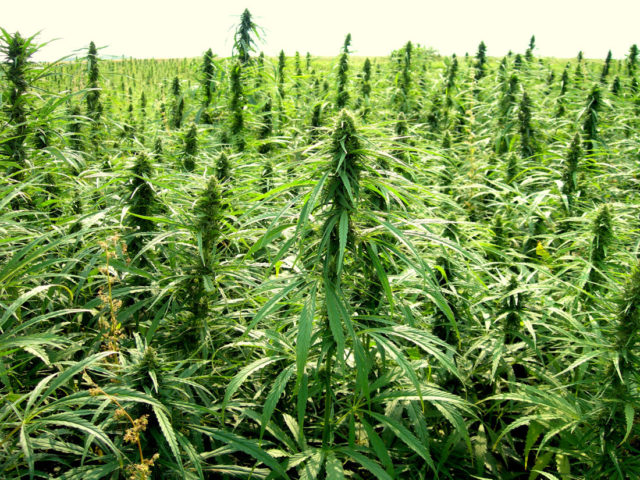
Marijuana is harvested for its flowers (or the “buds”), which contains mind-altering and perception-altering psychoactive properties; this is what is known as the “high” that marijuana causes. However, when it comes to industrial hemp, it is the stalks and seeds are the targets when it comes to harvesting this crop.
On the other hand, Industrial hemp plants do not contain enough THC to get anyone high. In fact, for cannabis to be considered hemp, it must have at the absolute most 0.3% THC by total weight, with many CBD retailers and manufacturers only carrying CBD products that contain virtually no detectable trace amounts of THC.
So, what’s the difference between CBD that is extracted from an industrial hemp source in comparison to CBD that was extracted from a cannabis source?
Well, one of the most common misconceptions about CBD products is that a CBD product that uses CBD that was extracted from industrial hemp is less potent than CBD products that use CBD that was extracted from the marijuana plant. While this is true, it’s not wholly true in a way that is meaningful for CBD users. The total percentage of CBD in hemp plants by total dry weight is lower than the percentage of CBD that can be found in some specific strains of the marijuana plant that was cross-bred in order to achieve a higher CBD content ratio, but once the oil is extracted from the plant, this difference becomes negligible based on the end product’s concentration. A 500 mg concentration of CBD is 500 mg of CBD regardless of whether that CBD was extracted from an industrial hemp source, or if it was extracted from a cannabis source. As we have discussed in the first section of this guide (Concentration Versus Dosage) and in the section “CBD Isolate, Full-Spectrum CBD, or Broad Spectrum CBD?”, it is the concentration, dosage, extraction method and where it falls on the Cannabinoid Spectrum Range that are the most important factors for the overall efficacy of a CBD product, not the source that it was extracted from.
Finally, in addition to industrial hemp-extracted CBD, hemp cultivars also grow much faster than marijuana cultivars, so an intensively bred CBD-dense medical marijuana strain would take a full season to grow, an industrial hemp farmer can create a more environmentally sustainable and conscious product with a faster turnaround, making the industrial hemp-derived CBD a better choice all-in-all in every scenario, aside from one: this assumes that you do not live in a state that has legalized recreational marijuana use and you are looking for a product that has a higher concentration of THC.
THC Content
The Food and Drug Administration (FDA) has approved a CBD pharmaceutical for seizure treatment and classified it as a schedule 5 drug (which is the classification for drugs with the lowest chance of dependency and abuse). However, many new potential CBD users worry about the legality* of CBD products in the state where they live. While hemp contains nearly non-existent trace levels of tetrahydrocannabinol (which is what is commonly known simply as THC), generally up to 0.3% of hemp is THC. Marijuana plants, of course, contains much higher levels (up to 30% THC). However, as of 2018, new federal legislation has removed industrial hemp from its previous Schedule 1 Drug status, and it is now classified as an “agricultural commodity.”
The Hemp Farming Act, which was passed later in 2018, used very clear and strong language in order to clear up any doubt about the legality of hemp-derived CBD and what was acceptable for the consumer market. This Federal bill defined hemp as “all sections of the Cannabis Sativa plant that have equal to or less than 0.3% THC by overall dry weight. This includes hemp derivatives, extracts, and — explicitly — cannabinoids and phytocannabinoids.
In short, all CBD products that you can purchase from a reputable retailer has been laboratory tested (often by a third-party laboratory) to ensure that the CBD product that is used in a particular product contains no more than 0.3% THC by volume. Many manufacturers even have products available that have virtually no detectable trace evidence of THC. Regardless, any product that has 0.3% or less of THC by total volume will not contain enough THC to produce any mind-altering or perception-altering effects that are commonly attributed to THC use, making it not only legal but also safe for regular daily use without needing to worry about potential adverse reactions.
However, as we have covered in our article about the state-by-state legality of CBD and THC products, there is the possibility of buying a CBD product with a higher THC content in some states (of which have recreational use of marijuana approved and have approved medical use of marijuana), which can obviously have a different effect on you than you might have anticipated, so if marijuana is legal for recreational use in your state (9 states in addition to Washington D.C.*), or you have been approved by your state’s government for THC use for one — or more — approved medical uses (36 states in total* in addition to Washington D.C.), always be aware of what you are buying from a dispensary or getting prescribed from your doctor. Knowing the THC content of the product that you are using if it is THC-rich will allow you to be better informed of how much and how often you should take it, and whether you should limit yourself from certain activities for a period of time following taking it, such as driving or operating heavy machinery.
*Please see the THC Legality Quick Check section at the end of this guide for a fast way to check your state’s legality stance on THC, or our legality guide (which is linked in the THC Legality Quick Check section) for more in-depth coverage
Ingredient Quality, Purity & Diet
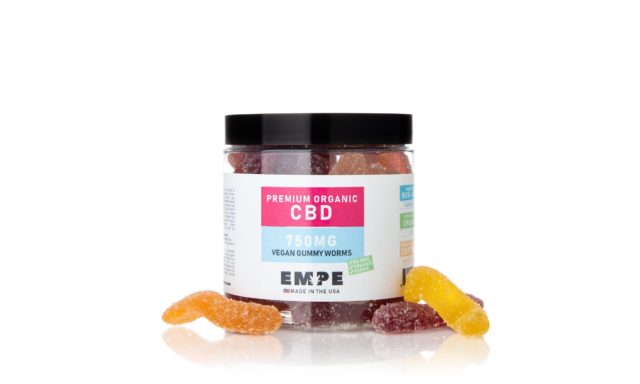
Many CBD manufacturers today are well aware of the ethical importance of using organic products that come from cruelty-free sources and are additionally sympathetic to those members of the population that have special dietary restrictions. Due to this, most of the larger and more reputable suppliers of CBD products make an effort only to use organic products whenever possible. Additionally, many CBD products for specific needs and uses (or comparable CBD products) use ingredients that will allow their customers with special dietary needs or moral stances when it comes to the ingredients in the products that they buy to be still able to fully enjoy the CBD products that they have for sale, such as only selling — or at the very least providing options for — products that are: non-GMO, gluten-free, dairy-free, fully vegan, sugar-free, Kosher Certified, all-natural, paraben-free, caffeine-free, phthalate-free, are locally sourced, are acquired from cruelty-free sources, are cultivated on farms that use sustainable farming process, and many more different considerations.
The extraction process can also play a strong role in the purity of the CBD products that you use, which is probably something that you are more conscious of due to giving your purchases and diet at least a little more consideration than the average consumer. As we discussed in the “Extraction Methods for CBD” section, the most common extraction method in use by manufacturers today (the CO2 Extraction method) leaves behind an incredibly clean, pure and potent end product. Ethanol Extraction is also a very clean extraction process, for those that prefer brands that use this extraction process, but under no circumstances can we recommend that you use CBD products that were manufactured using either the Carrier Oil Extraction method or “The Rick Simpson Method” of extraction, as both of these extraction methods often leave behind deposits of harmful or inorganic residues and trace compounds. If the purity of a product that you’re going to put in or on your body is important to you, we really feel that you should stick to the two most common extraction methods, which are widely regarded as being the two best extraction methods by consumers, industry leaders, and researchers alike.
These two extraction methods that are the most highly recommended do not include exposing the plant parts to harsh, dangerous and the inexorable contamination of the end product. Some of the potential pollutants that can be left over after less effective and safe extraction processes include heavy metals, pesticides, herbicides, general toxins, toxic solvents, neurotoxins, and other dangerous byproducts and unintentional ingredients. This is why it’s always highly recommended by healthcare professionals — and by us — that you always buy your CBD products from a reputable source and that you only buy CBD products that contain CBD which was extracted either using an Ethanol Extraction method or by using a CO2 Extraction method (as is the case with each of the CBD companies that we recommend on our site, and which is a topic that we have fully covered in not only this guide but also in a separate in-depth dive into the extraction methods that are most commonly used in the CBD industry today) and whenever possible that you buy your CBD products from a company that uses stringent third-party laboratory testing that exhaustively tests the overall purity and potency of the products that they are hired to test.
Companies that do this are often able (and are more than happy!) to provide you with a specific product’s batch Certificate of Analysis (COA) upon request. This allows you to check for yourself what the laboratory found for any given batch of products that are manufactured by a particular brand. This batch testing is effective because the laboratory will test a number of randomly chosen products within a batch (or a group) of a specific number of products within a manufacturing window. The batch COA that you can request for the product that you are ordering, or have ordered, will be a group of products that were manufactured within that batch window that your product was included in. The way batch testing is done ensures that companies are not able to game the system by sending the laboratory a product that they know will definitely pass the testing, and also so if there ever is an issue found with a product, the manufacturer will know which batch of products to recall and destroy for consumer safety.
Because of all these steps that reputable CBD manufacturers and retailers take to ensure that the products that they make and sell are as safe, accommodating to a variety of needs, and ethical as possible, a wider demographic can benefit from the numerous physical and mental health properties that CBD provides. This makes buying these high-quality CBD products easy on the mind and on the heart.
Value and Price Points
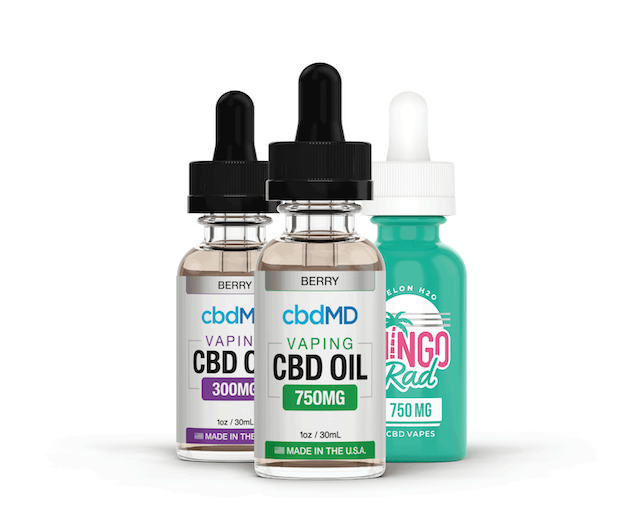
Incidentally, speaking of CBD products being easy on things that are important to you: CBD products are often comparatively easy on the wallet, particularly when compared to the numerous different traditional over-the-counter medications that often get prescribed to treat or mitigate the ill-effects of many common ailments that CBD has been both clinically proven and consumer testimonial-documented to greatly help with a high percentage of success rate. Of course there almost always will be differences in the price of a CBD product, depending on a couple of different factors, such as: what CBD product you’re interested in buying, what size the product is being bought in, if there’s a discount for wholesale or bulk purchases, how often the manufacturer and retailer offers discounts to their customers, the extraction process used in the manufacturing process, and the concentration of CBD in the overall product — among many other factors.
We recommend that you take your time and look through our various articles and rankings on the industry leaders in the CBD market today and use the information we have provided to you in this guide in order to make a more well-informed purchase. By shopping around often and checking each brand’s various perks for things such as wholesale discounts or discounts for veterans, you can find a lot of really good deals out there. Most of these CBD companies that we have researched and written about genuinely care about their customers and they don’t want the cost of CBD products to be a limiting factor in who can access and subsequently benefit from their numerous CBD products. If the cost of some of the CBD products that you may have seen online is still acting as a barrier of entry for you, we would recommend you try and reach out to a variety of CBD retailers and get in touch with their customer service team and see if there is something that can be done to assist you; each and every single one of the customer service teams that we have dealt with in the past have been extremely helpful, courteous, professional and caring. Also, don’t forget that there are a variety of different coupon websites and phone apps out there that occasionally aggregate various available CBD coupons and discounts in an easy to search place, such as coupons.com and offers.com, among others. And don’t forget that by staying up-to-date with our product rankings and articles, you will also be staying in the loop as to where the best places are to start shopping in order to find a CBD product that works for your lifestyle, your mental and physical health needs, and — of course — one that works for your wallet.
Finally, we have a quick tip for you when it comes to comparing different CBD products in order to try and find the best price points available. Because of the concentration of CBD, the total product size, and the cost varies from one company to another, and it can sometimes feel a little overwhelming when it comes to deal hunting. The best way to solve this is to simply add the total costs of the product (product cost plus the cost of Shipping and Handling, if any) and divide this number by how many mg in total of CBD the product contains in order to find your price per milligram of CBD. So, hypothetically, if you’re looking at a CBD oil tincture from A CBD Company that is available in a 30 mL bottle (1 fluid ounce) of sublingual oil at a concentration of 300 mg of CBD, and the cost of the product is $39.99 USD plus an additional $10.00 USD for Shipping and Handling, you would just add $39.99 to $10.00, which gives you your total cost of $49.99. Because this is a 30 mL bottle of 300 mg concentrate CBD, you would divide $49.99 by 300, giving you a total approximately $0.17 USD per milligram of CBD. So, in this example, you would be paying $0.17 USD per milligram of CBD, which you can then compare to other CBD brands and their CBD products, allowing you to figure out which CBD products will give you the best price point per each milligram of CBD that your product contains.
Resources
- The CDC’s BMI Overview can be found here;
- The CDC’s BMI Information Page can be found here;
- The CDC’s BMI Calculator can be found here;
- The United States Food and Drug Administration (FDA) Foreward on CBD can be found here;
- The FDA’s Q and A Page on CBD can be found here;
- The Information on The Hemp Farming Act of 2018 can be found here;
- Our extensive Frequently Asked Questions (FAQs) can be found here;
- Offers.com’s homepage for searching coupons and discounts can be found here;
- Coupons.com’s homepage for searching coupons and discounts can be found here
THC Legality Quick Check
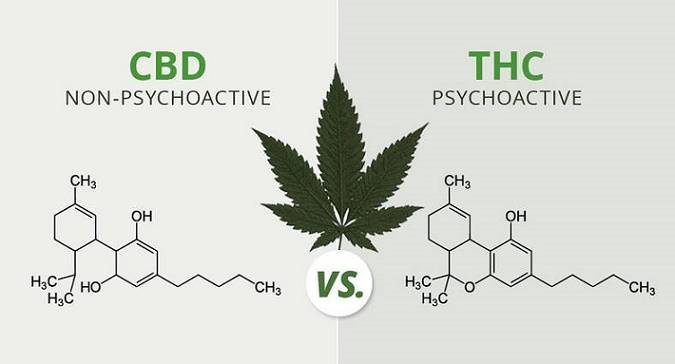
Recreational Use*:
Alaska, California, Colorado, District of Columbia, Maine, Massachusetts, Nevada, Oregon, Vermont, and Washington
Medicinal Use (With or Without Exemptions and / or Stronger Guidelines)*:
Alaska, Arizona, Arkansas, California, Colorado, Connecticut, Delaware, District of Columbia, Florida, Georgia, Hawaiʻi, Illinois, Iowa, Louisiana, Maine, Maryland, Massachusetts, Michigan, Missouri, Montana, Nevada, New Hampshire, New Jersey, New Mexico, New York, North Dakota, Ohio, Oklahoma, Oregon, Pennsylvania, Rhode Island, Tennessee, Texas, Utah, Vermont, Washington, and West Virginia.
*These are subject to change as new recreational and medical marijuana usage laws get passed. This is also a very overly-simplified list. We highly suggest that you check the laws in your state on our in-depth guide to the legality of THC and CBD products, which can be found here.
Glossary
- Cannabidiol: commonly known as CBD. It is one of the as of now 113 identified cannabinoids in cannabis plants, and it accounts for up to 40% of the plant’s extract. Cannabidiol was a cannabinoid that was originally discovered in 1940, but clinical research on cannabidiol — including preliminary studies of its effect on anxiety, cognition, movement disorders, and pain among others — did not start in earnest until 2018.
- Cannabinoid: a class of diverse chemical compounds that acts on cannabinoid receptors (which is also known as the endocannabinoid system) in cells, and that alter neurotransmitter release in the brain. Arguably the most well-known cannabinoid is THC, but CBD is also another example of a cannabinoid. There are at least 113 different cannabinoids isolated from cannabis, exhibiting varied effects. Other potentially important Cannabinoids that are commonly referenced as being present in a variety of different CBD products include: Tetrahydrocannabinolic Acid (THCA), Tetrahydrocannabivarin (THCV or THV), Cannabinol (CBN), Cannabidiolic Acid (CBDA), Cannabigerol (CBG), Cannabichromene (CBC), Cannabicyclol (CBL), Cannabivarin (CBV), Cannabidivarin (CBDV), Cannabichromevarin (CBCV), Cannabigerovarin (CBGV), Cannabigerol Monomethyl Ether (CBGM), Cannabielsoin (CBE), and Cannabicitran (CBT).
- Cannabinoid Spectrum Range: the range of chemicals a specific extraction of CBD will contain. CBD can easily be classified into one of three different groups on the Cannabinoid Spectrum Range; either Isolate, Broad-Spectrum, or Full-Spectrum. Each classification of CBD has different pros and cons, and each of these should be weighed against the others in order to determine what CBD product is best for you.
- Certificate of Analysis: also COA, a document that comes from an accredited and reputable laboratory that shows the quantity of various cannabinoids that are contained in a product. The COA also often shows if there are any trace compounds that should not be present in the product, such as heavy metals and pesticides. Additionally, the COA is also a good way to judge the potential efficacy of a specific CBD product, because the presence of cannabinoids in greater numbers when compared to products that are not as cannabinoid-rich and compound-dense is generally a good indicator of the overall potency that you can expect from your CBD product.
- Decarboxylation: the process of heating the plant to a specific temperature for a specific length of time, which cooks it in such a way that it activates the chemicals inside the plant material used in this extraction process)
- Endocannabinoids: cannabinoids that are produced naturally in the body by animals.
- Endocannabinoid System: also known as the ECS, a biological system that is composed of endocannabinoids, which are endogenous lipid-based retrograde neurotransmitters that bind to cannabinoid receptors. Additionally, cannabinoid receptor proteins that are present throughout the vertebrate central nervous system (including the brain) and peripheral nervous system are a part of this biological system.
- Entourage Effect, The: a term used by CBD users and manufacturers refer to the perceived increase in the overall efficacy and potency of a CBD product when there are greater levels of phytocannabinoids, terpenes and amino acids present. The belief is that all of these compounds come together to form a symphony of beneficial organic chemicals which have a greater and more positive effect on your Endocannabinoid System.
- Mid-Critical Extraction: a form of CO2 extraction that is performed in what is simply a general range between subcritical and supercritical levels.
- Phytocannabinoids: cannabinoids that are found in cannabis; also refers to cannabinoids that are synthetic.
- Phytocannabinoid tetrahydrocannabinol: commonly known as THC and is the main psychoactive ingredient in marijuana and marijuana-derived products.
- Subcritical Extraction: a form of CO2 extraction where the fluids are compressed below their critical temperatures (87.8 °F or 31 °C), yet is kept in the liquid state and is used above their boiling points with the use of pressure.
- Supercritical Extraction: a form of CO2 extraction (and is currently the most commonly used form of is a form of CO2 extraction) where the conditions for supercritical carbon dioxide are above the critical temperature of 87.8 °F (31 °C) and critical pressure of 74 bar (a bar is a metric unit of measurement for pressure). Approximately 1 bar is equal to 14.5038 pound-force per square inch (commonly known as pounds per square inch or simply as PSI) or 100,000 Pascals.
- Terpenes: a large and diverse class of organic compounds, produced by a variety of plants, particularly conifers, and by some insects. Cannabis terpenes and hemp terpenes are one of the main contributing factors in the overall flavor of the product, so higher concentrations of certain terpenes can drastically change the flavor. More than 100 different terpenes have been identified in the cannabis plant, and every strain is unique.
- Terpenoids: a large and diverse class of naturally occurring organic chemicals which are derived from terpenes, and which are sometimes called isoprenoids.
